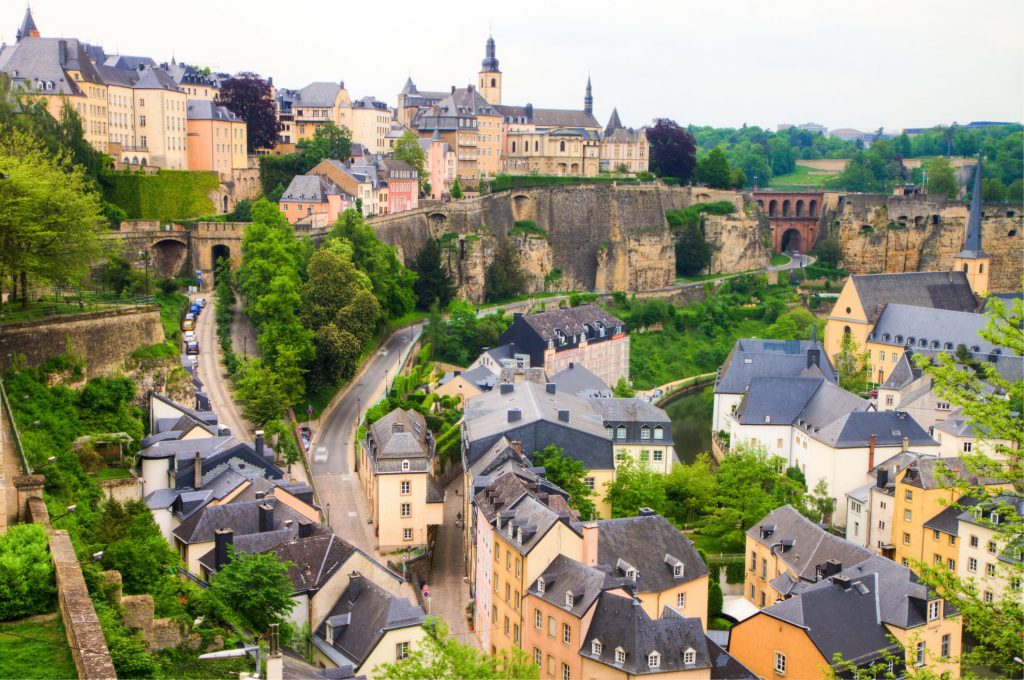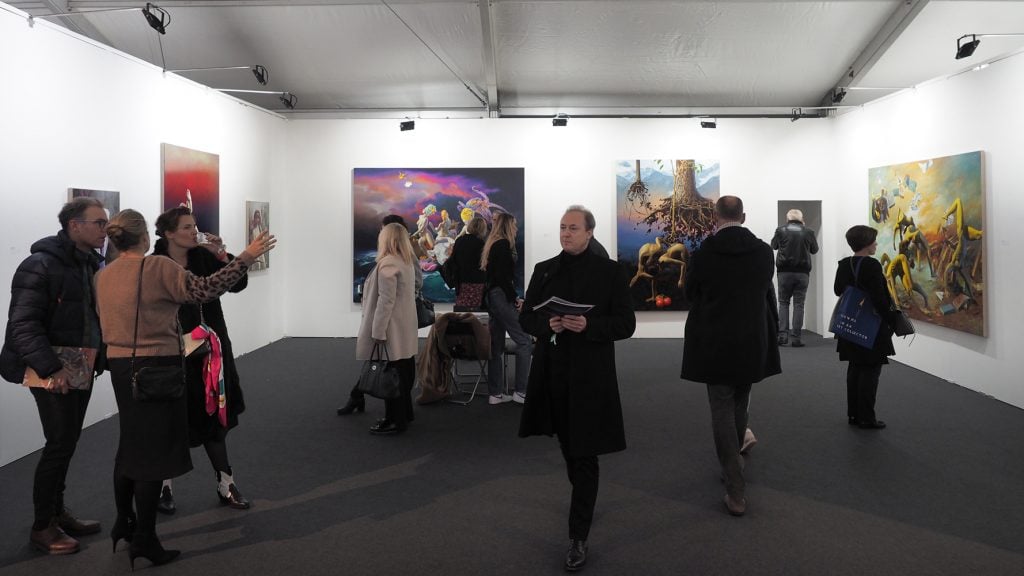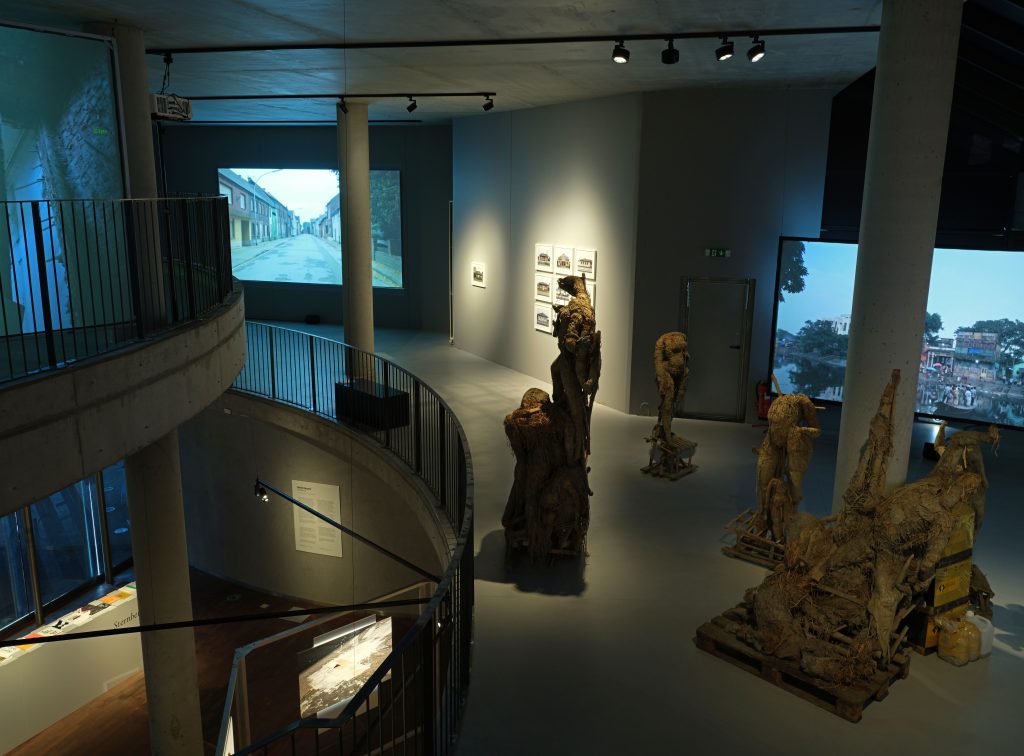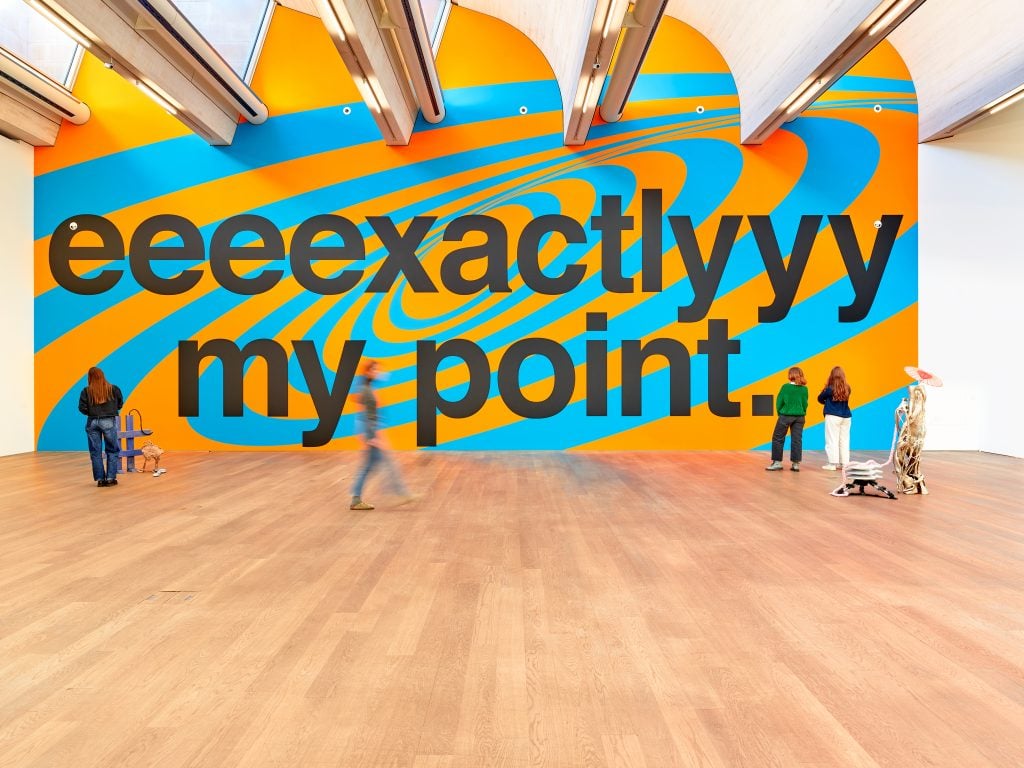Artnet News Pro
Tiny, Land-Locked Luxembourg Is Europe’s Richest Country. It Has Big Plans to Grow an Art Infrastructure to Match
The local scene has expanded drastically in the last 10 years, but can the country become an arts hub?

The local scene has expanded drastically in the last 10 years, but can the country become an arts hub?

Devorah Lauter

While most art fairs have been cutting back on exhibitors and events this fall, one has been doing the opposite. The young, hybrid art fair and exhibition program dubbed Luxembourg Art Week (LAW), held 12-14 November, has grown in size every edition since its inception seven years ago, except for an online-only show held last year. And its growing international reach is lending the country’s fast-developing art ecosystem a spark of influence, after decades of being brushed off as a cultural “desert.”
With Europe’s highest per capita GDP—largely thanks to a thriving financial sector boosted by hefty fiscal advantages for businesses, plus its proximity to France, Belgium and Germany—it might come as a surprise that the Grand Duchy of Luxembourg is a late bloomer to the art world. But despite its advantageous location and prosperous residents, it would be premature to talk of a cultural Renaissance—or even an arts hub—in Luxembourg, yet. And no, there is not a fiscal benefit to buying art in the landlocked, wealthy country. Criticized as an offshore tax haven for multinational corporations, locals are quick to point out, with evident satisfaction, that they do indeed pay regular sales tax on art purchases. So what, exactly, is going on in the tiny, nearly 1,000-square-mile country’s developing art landscape? Will it become the next Basel? Artnet News spoke to several key players in Luxembourg to find out.
As the fair’s 80 dealers (up from 65 in 2019) prepared to wine and dine VIP collectors at this year’s gala event on November 11, the stark then-vs-now comparisons were among the evening’s favorite topics. “When the fair started,” remembered Audrey Bossuyt-Mahy, co-founder of the Luxembourg-based Zidoun-Bossuyt Gallery, “people were so unused to the concept of an art fair that they asked us if things were for sale.”
Now, with more collectors coming from nearby countries (about 75 percent of the visitors at the preview were foreigners), the gallery sold just about every piece in its booth, priced between €2,000 and €200,000 (around $2,200 to $220,000), including a large diptych by the New York-based artist Wangechi Mutu. “Every year the fair gets better and, in 10 years, the art scene has changed here. People are starting to talk about Luxembourg abroad. It’s a bit like Brussels was 20 or 30 years ago,” Bosuyt-Mahy added.

Luxembourg Art Week opened with 80 exhibitors this year.
“There’s been a very positive evolution” of Luxembourg’s art scene, said Alex Reding, the fair founder and owner of gallery Nosbaum Reding. “It’s not Paris yet, but we don’t have to hide behind other places. We’ve arrived at a level of international standing for a city of 100,000 inhabitants that is close to Brussels or Cologne,” he added.
Reding said the current size of the fair was good, however, and he does not want to grow beyond that. Located in a temporary 5,000-square-meter space in the city center, the event is “at a size similar to Art Geneva, which is in a city of almost 500,000 inhabitants,” he explained. Plus, more established art fairs nearby already offer plenty of choices for local art enthusiasts, practically on a weekly basis.
But Luxembourg has a wild card up its sleeve. It is steadily attracting hundreds of thousands of daily commuters from nearby countries, as well as skilled residents from abroad, who have settled there to work in the financial and legal sectors (the EU’s Court of Justice is based in Luxembourg). In 1981, the country had a population of 365,000, but with Europe’s highest growth rate of around 2 percent annually—thanks mostly to immigration—it is now reaching 640,000. About 70 percent of the capital’s residents are now foreign-born. The country is responding to the population boom with large urban development projects, and the arts have emerged as an important ingredient.
“Once you get a more cosmopolitan mix to a population, it generates a different type of appreciation for culture,” said Suzanne Cotter, the outgoing director of MUDAM, Luxembourg’s only contemporary art museum, which opened in 2006 and was designed by Pritzker Prize-winner l.M. Pei.
The country’s efforts to expand its cultural sector were significantly nudged along when it was named European Capital of Culture in 1995 and again in 2007. The area around MUDAM, known as the Kirchberg Plateau, is at the centre of the city’s urban growth. It includes the Philharmonie concert hall, which opened in 2005, a new national library, along with EU government buildings and a business district. The Casino Luxembourg, a contemporary exhibition hall, just opened a space for young, local artists called Casino Display. Plus, a 20-minute drive south takes you to Esch, named European Culture Capital for 2022, where the Konschthal Esch opened in October. The contemporary art space’s inaugural exhibition “Ego-Tunnel” is an unforgettable, immersive experience by the German artist Gregor Schneider.

Gregor Schneider’s exhibition “Ego-Tunnel” at Konschthal Esch in Luxembourg. Photo: © Konschthal Esch.
And the government is upping its support. In 2020, the ministry of culture created the Kultur-lx Arts Council Luxembourg to support artists living in or from the country, through grants, residencies, and career counseling. The council has an annual budget of almost €2 million ($2.2 million), with about half going towards artists. In the southern city of Esch, meanwhile, a whopping 20 percent of the city’s budget is dedicated to cultural development ahead of next year’s culture capital events, amounting to €32 million ($36.2 million).
Before it was named a capital of culture in 1995, Luxembourg was viewed as, “a desert with nothing happening, and everyone went away to study elsewhere, and then maybe came back,” Cotter said. “There wasn’t really a platform or visibility for artists.”
There is still no art school in Luxembourg. With a historically rural set-up, small population and a still-active steel industry, the only public university in Luxembourg opened in 2003. Young people were and still are encouraged to study abroad. However, as demonstrated by MUDAM’s current show “Freigeister. Fragments of an art scene in Luxembourg and beyond,” this means artists connected to Luxembourg tend to be very mobile and influenced by a crossing of cultures.
“With so many families of immigrants who were born and grew up here, we have this baggage on our shoulders about coming from other cultures, but naturally integrating. People easily switch from one language to another,” said multidisciplinary artist Su-Mei Tse, born in 1973 in Luxembourg, to a family of Chinese-British descent. Now based in Berlin, she has a solo show on at Nosbaum Reding titled “Enough or Alive.”
“I could not have imagined staying here,” said fellow Luxembourg native Tina Gillen (born in 1972), who is now based in Brussels. “The cultural network was too small. I had to go somewhere else—I chose it, but there was no choice.” Today, Gillen’s atmospheric, painted portraits of architectural forms, often inspired by films and photographs, are included in MUDAM’s collection, and the artist will represent Luxembourg in the 59th Venice Biennale next year. “Artists are now staying here, and there’s an art scene. There’s a new generation in place that is very aware of what’s going on,” Gillen added, “but you have to educate the public, and the whole city about what contemporary art is. It doesn’t just happen one day to the next.”

Installation view of “Post-Capital: Art and the Economics of the Digital Age” at MUDAM Luxembourg. Photo: © Rémi Villaggi.
Few seem to understand that better than Alex Reding. He launched Luxembourg Art Week in 2015, in cooperation with surrounding institutions, as a way to enliven the capital’s small network of local art collectors and art enthusiasts with fresh blood. “I was motivated to create this event for those three-quarters [of the city residents] who are no longer from here. Who are the CEOs of all the companies you see here… which drive the modern, global economy,” Reding told a group of journalists at the fair. “We don’t know them. They are the new collectors. The goal is to get to know them.”
But Reding and others acknowledged that Luxembourg Art Week still lacks contemporary art connoisseurs. That absence was felt at the fair, where some galleries struggled to sell works above €10,000 ($11,300). Decorative pieces were a safer bet for a public that many dealers said was curious, but not necessarily serious, about collecting contemporary art, preferring impulse purchases from galleries they recognized, at lower prices.
“The public here has pretty conservative, classic taste,” said Laurent Godin, the founder of the eponymous Paris gallery. After two public opening days at the fair, he wasn’t able to sell any of the works he brought to Luxembourg, including sculptures by Wang Du, Peter Buggenhout, and Sylvie Auvray, averaging €40,000 ($45,000) a piece. “It’s not a really important market, and it takes time to build up,” the dealer added, “so we’re asking ourselves whether it makes sense to take that time.